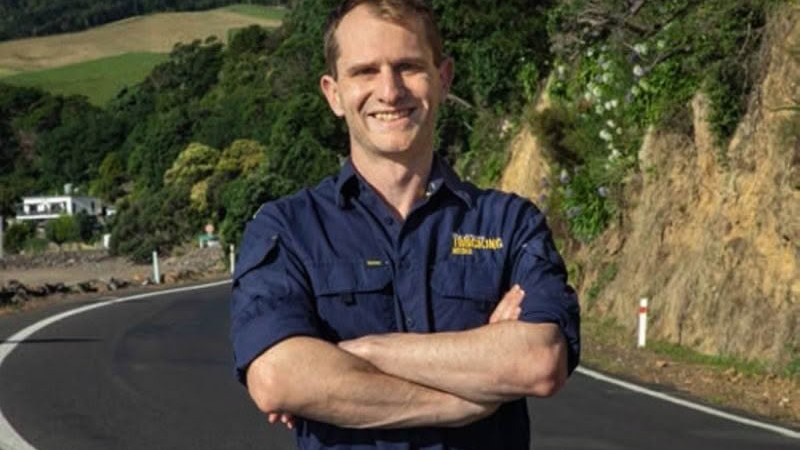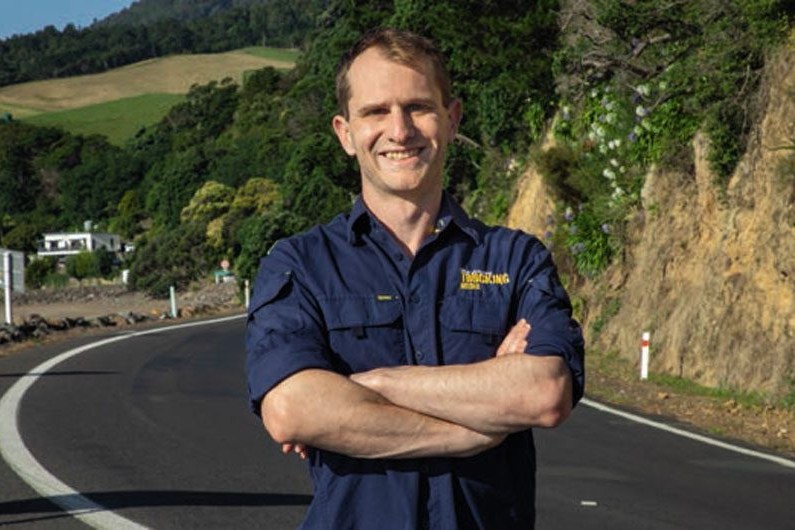
I happened to drive from Tauranga to Thames on Tuesday morning, unaware I’d come across a troop of protestors at the new Sharp Road roundabout just outside Katikati. For those unaware, this is one of six new roundabouts at intersections along SH2 between Katikati and Ōmokoroa as part of the Waihi-to-Ōmokoroa works. With this roundabout recently completed, the next step at this section of road is to install the flexible median barriers down SH2 on either side of it.
And those are what the protesters were airing their discontent over. As part of its ‘safety upgrades’ initiative on this stretch of SH2, in addition to these and other intersection upgrades, the NZTA has reduced the speed limit, widened the road’s shoulders and central medians and installed flexible wire rope barriers.
The problem is that SH2 is very much a main trunk road, with dozens of local roads feeding into it along the way. The barriers, as you can imagine, remove the possibility for right-hand turns into and out of these roads, meaning that drivers need to continue along SH2 to the nearest roundabout or other opportunity to turn around and double back to the road they intended to turn onto. Likewise, those wishing to exit right at these roads are forced to turn left, turn around and double back.
Over time, we’ve written a fair bit about the Waihi-to-Ōmokoroa upgrades. Years in, this section of SH2 has seen almost constant roadworks activity inching its way up and down the corridor. The aim of this editorial is not to discuss these. They need to be considered in the broader context of the upgrades, which I’ve opined before should and could have been done better and with more future thinking. However, for what it’s worth in relation to today’s topic, I think the inclusion of roundabouts at key intersections is positive (even if some of them appear a bit tight for HPMVs, though NZTA says they are not), the removal of certain passing lanes is nonsensical, and the advantages of central median barriers on an increasingly busy road outweigh the disadvantages.
The protestors on Tuesday obviously disagree. They were out in fair numbers and their placards made it clear they do not approve of the median barriers and their implications for mobility and the community.
After encountering the protest, I did some research and found a week-old article by the NZ Herald announcing it. The article quotes local residents complaining about getting nowhere in their engagement with NZTA over the last two to three years, and I gather the protests are a last-ditch attempt at being heard.
These particular upgrades date back to 2021, with the earliest documents outlining them and calling for community engagement I could find from February that year. While it appears from the news reports that the community has engaged, this is the first protest I’ve come across in three and a half years. The problem is, what can protesting about something after the fact accomplish? The work is done; the ropes are up. You’re turning left.
And therein lies the lesson. The industry faces many challenges, some of which we know are on the radar of those in control, some of which are bubbling away close to boiling over (Cook Strait crossings in mind). So, engage. Join and be active in the industry associations. Attend public open days when Waka Kotahi plans to spend your money working on your roads. Hammer on the door if your local representatives if you’re truly aggrieved.
Make your voice heard through the right channels – in my mind, moaning on Facebook and protesting at the roadside as morning commuters try to complete their journeys achieve nothing, especially after the fact.
Protest if you must, but do it before the chance has passed in a way that achieves something.
Take care out there,
Gavin Myers
Editor
Read more
The energy to continue
0 Comments4 Minutes
When opportunity presents
0 Comments4 Minutes
Roadworks positivity
0 Comments4 Minutes




Gavin the resident protesting have engaged over the last 3 years it’s just nzta just do what ever they what. Here’s a thought for you what are you going to say when your stuck behind the tractor doing 40 kmph nowhere to pull of so you can pass he’s traveling 7 km to get 200m down the road good productivity ahh
Hi Bernard, thanks for the comment. Don’t disagree at all. As I said, the ‘upgrades’ could’ve been done in a better way and with more consideration for increasing future traffic volumes. I’m aware it’s been hard to get feedback through to NZTA over the past few years despite them asking for it. The point of the editorial was not to pick out the residents for protesting, it was to encourage citizens, truck operators and anyone involved with the industry to take a stronger approach to having their opinions heard before it’s too late, whether by going through an industry association, local councillors, etc. The problem today is that many people are apathetic, or moan in closed circles, which accomplishes nothing.
Cheers!